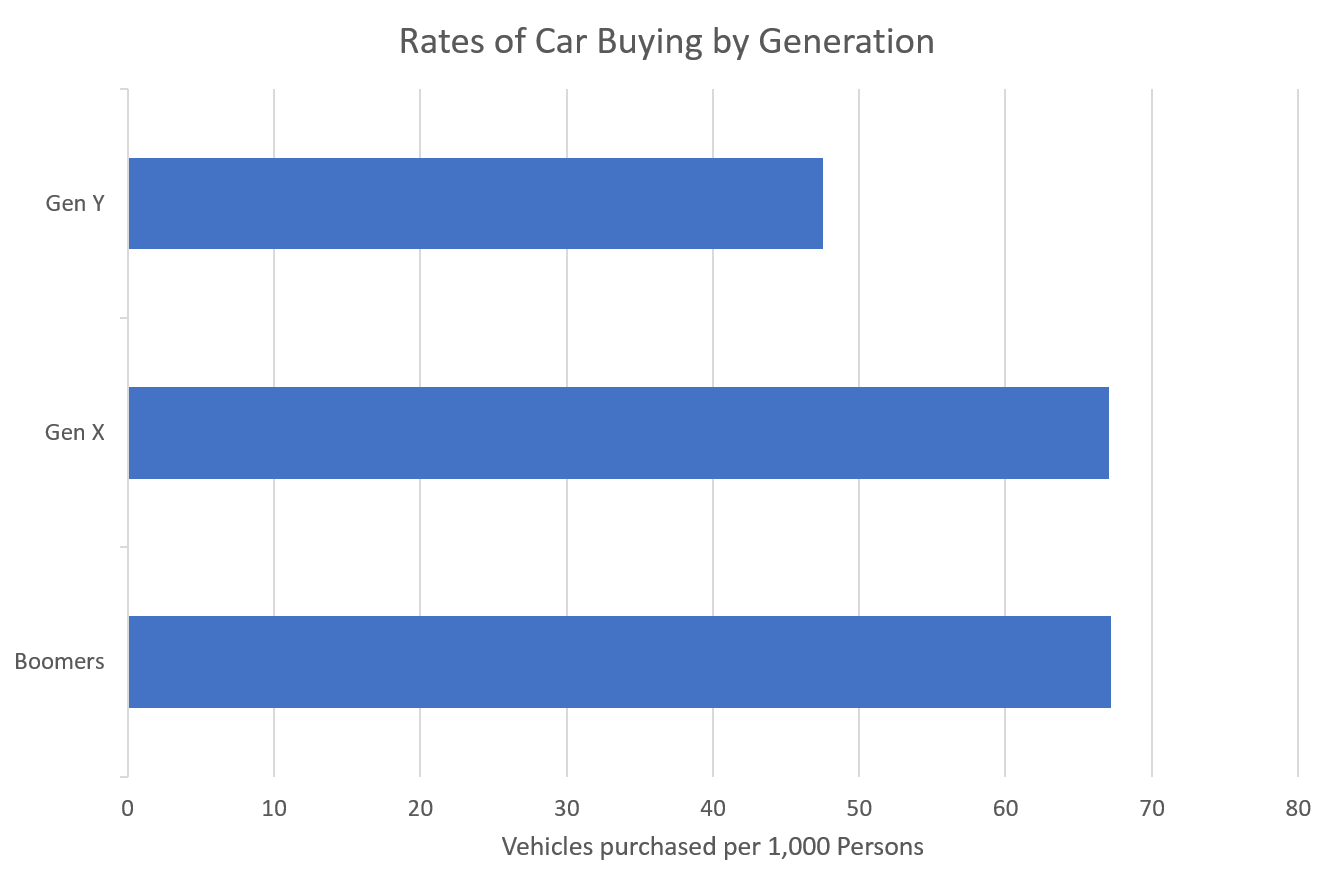Don’t Believe the Hype – Millennials’ Transportation Habits Are Changing
Despite news stories claiming that Millennials are buying up cars at record rates, the reality is quite different. After adjusting previous studies to account for differences in the size of the generations measured, on a per-capita basis, Millennials are 29 percent less likely than members of Generation X to own a car.
You may have seen a number of news stories recently claiming that Millennials are buying up cars at record rates just like previous generations, and that they just got a late start.1,2 Those reports don’t tell the whole story though. After adjusting previous studies on the topic to account for differences in the size of the respective generations measured, City Observatory found that, on a per-capita basis, members of Generation Y (born 1977 to 1994) are 29 percent less likely than members of Generation X to own a car.3

Graph based on numbers from City Observatory
The myth about Millennials and their car purchasing has been overhyped. According to a survey released by The Rockefeller Foundation and Transportation for America on Millennials’ perceptions and attitudes toward transportation, almost half (46 percent) of the surveyed vehicle owners said that they would “seriously consider giving up their cars if they could count on a range of transportation options.”4 The message is clear: Millennials are willing to rely upon non-driving modes of transportation more heavily if presented with good options. Encouraging these positive trends will lead to significant benefits including less money spent on roads and highway construction and repair, fewer traffic problems and delays, fewer crashes leading to death and serious injuries, and significantly less air and global warming pollution.
We have long pointed to Millennials’ changing transportation behavior as a reason to invest less in new and wider highways and invest more in critical transit, biking, and pedestrian alternatives. New and better technology, such as mobile applications that Millennials have been quick to adopt, makes it easier to use other transportation options. Changing lifestyles, choices, and preferences are also playing a key role in Millennials’ changing transportation habits.
The result: America has the fewest 16-year-old drivers today since the 1960s5 and “a smaller percentage of Americans are licensed to drive now than were in 2008.”6 State and federal government institutions should be encouraging and assisting in this trend toward driving less. By enhancing public transportation, expanding new technologies, and building more biking and walking infrastructure, we can create a more efficient transportation system that is cleaner and gives people the options that they want.
1, “Millennials Embrace Cars, Defying Predictions of Sales Implosion,” Bloomberg, April 20, 2015.
2 Derek Thompson, “Millennials: Not So Cheap, After All,” The Atlantic, April 21, 2015.
3 Joe Cortright, “Young People Are Buying Fewer Cars,” City Observatory, April 22, 2015.
4 Michael Myers, “Public Transportation Shapes Where Millennials Decide to Live,” The Rockefeller Foundation, April 23, 2014.
5 Laura Bliss, “America has the fewest 16-Year-Old Drivers Since the 1960s,” CityLab, April 6, 2016.
6 “Highway Statistics Series” Federal Highway Administration, last modified May 6, 2016.